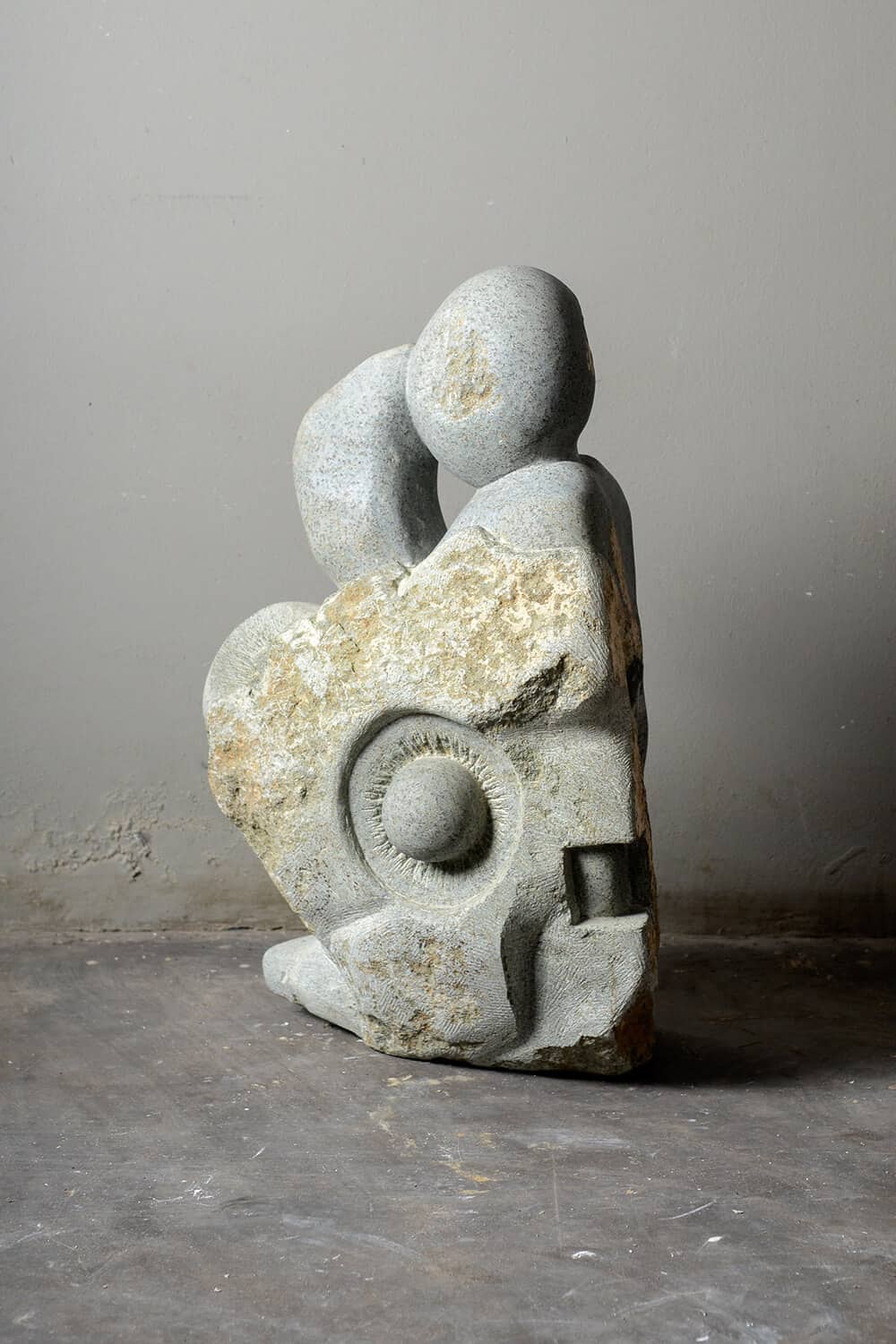Brendon Bell-Roberts speaks with Gina Figueira and Helen Harris, co-founders of StArt Art Gallery, about fostering Namibian talent, how the pandemic played into their digital strategy and what they have planned for the future.
StArt Art Gallery is an independent gallery with an online platform and a physical presence in Namibia and abroad through pop-up exhibitions, markets and art fairs. They opened their doors to the public in Windhoek, Namibia, in late September 2017 and have worked closely with artists to facilitate the development of their artistic and professional practice ever since.
Brendon Bell-Roberts: Tell us about StArt Art Gallery?
Gina Figueira: We’ve known each other for ages growing up in Windhoek. We also both ended up going to art school around the same time and then worked at the National Art Gallery of Namibia (NAGN) together for a few years. With backgrounds as artists and then experience working in curatorial capacities, we decided to start our gallery. State-owned art spaces dominate the contemporary Namibian art scene, and we believed that it would benefit from having an independent and dedicated art gallery. By leaving a larger institutional space like the NAGN, we dedicated more time and effort to individual artists whose practice we admire.
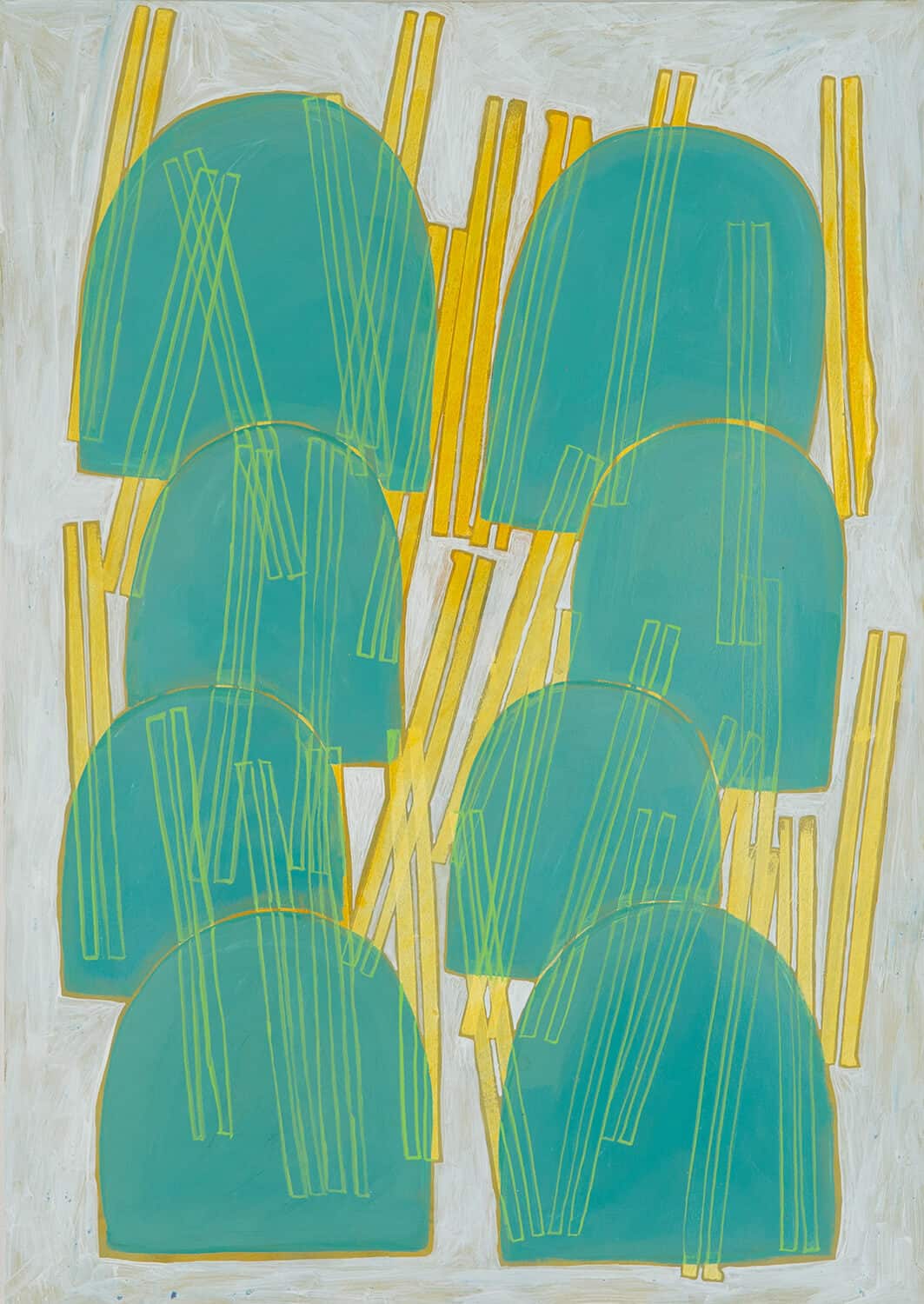
Nicky Marais, Connections 4, 2020. Acrylic and acrylic ink on paper, 42 x 59.4cm. All images courtesy of the artist & StArt Art Gallery.
State-owned art spaces dominate the contemporary Namibian art scene, and we believed that it would benefit from having an independent and dedicated art gallery.
What are some of the pressing needs facing the contemporary art and cultural scenes in Namibia?
Helen Harris: As with many of our neighbours on the continent, our needs are various and interconnected. The need for a robust arts education system that spans from primary to tertiary education and the need for dedicated arts writing, both academic, curatorial and journalistic, are both tied in with the need for a more stable market collector base, gallery and museum infrastructure. We do not entirely lack these departments, but they all desperately need growth and stimulation. What we are not short of are incredible artists. However, in each generation, only a handful of artists and curators can keep working and grow their practice over their lifetimes. With StArt, we see ourselves trying to fill one of the gaps in this interconnected web, and because we understand it as a web, we are also continually looking for ways to add to and support the scene as a whole. First and foremost, we are in dire need of affordable workspaces for studios and galleries. More spaces for artists to develop their practice, show their work and more freedom to give attention to the display, promotion and care of artworks before they move into private and institutional collections. Galleries can measure security to the artists they work with, and artists tend to thrive when they have access to materials and adequate workspace.
What artists do you represent/support, and why?
GF: We work with many artists and provide various levels of support depending on the context. There are artists we work with more irregularly through projects, collaborations and group exhibitions. Then there are artists we represent on our website and regularly draw into our exhibition program for solo shows. Fillipus Sheehama and Ismael Shivute are sculptors working with mixed media predominantly made up of recycled materials. While both Shivute and Sheehama tend toward the non-representational, Shivute draws on shapes and signifiers of his daily life, and Sheehama’s work speaks to uneven power dynamics more generally. Elisia Nghidishange is a sculptor and a printmaker whose feminist work challenges the continued marginalisation of women in both private and public spheres. Other printmakers are Lok Kandjengo, Petrus Amuthenu and Elia Shiwoohamba, who all take their inspiration motifs from their surroundings. The two painters of the group are Nicky Marais and Rudolf Seibeb. Both are known for their abstract approaches, with Marais creating paintings out of carefully considered symbols and Seibeb constructing surreal visuals, often taken from his dreams. Seibeb also works with The Project Room in Windhoek. Laimi Mbangula, Lynette Diergaardt and Elizabeth Shinana are fibre artists who create weavings and hand-stencilled and screen-printed textiles. All three fibre artists draw on explorations of identity in their work. We also work with the late photographer Tony Figueira’s estate, whose extensive photographic oeuvre includes abstract and photojournalistic subject matter.
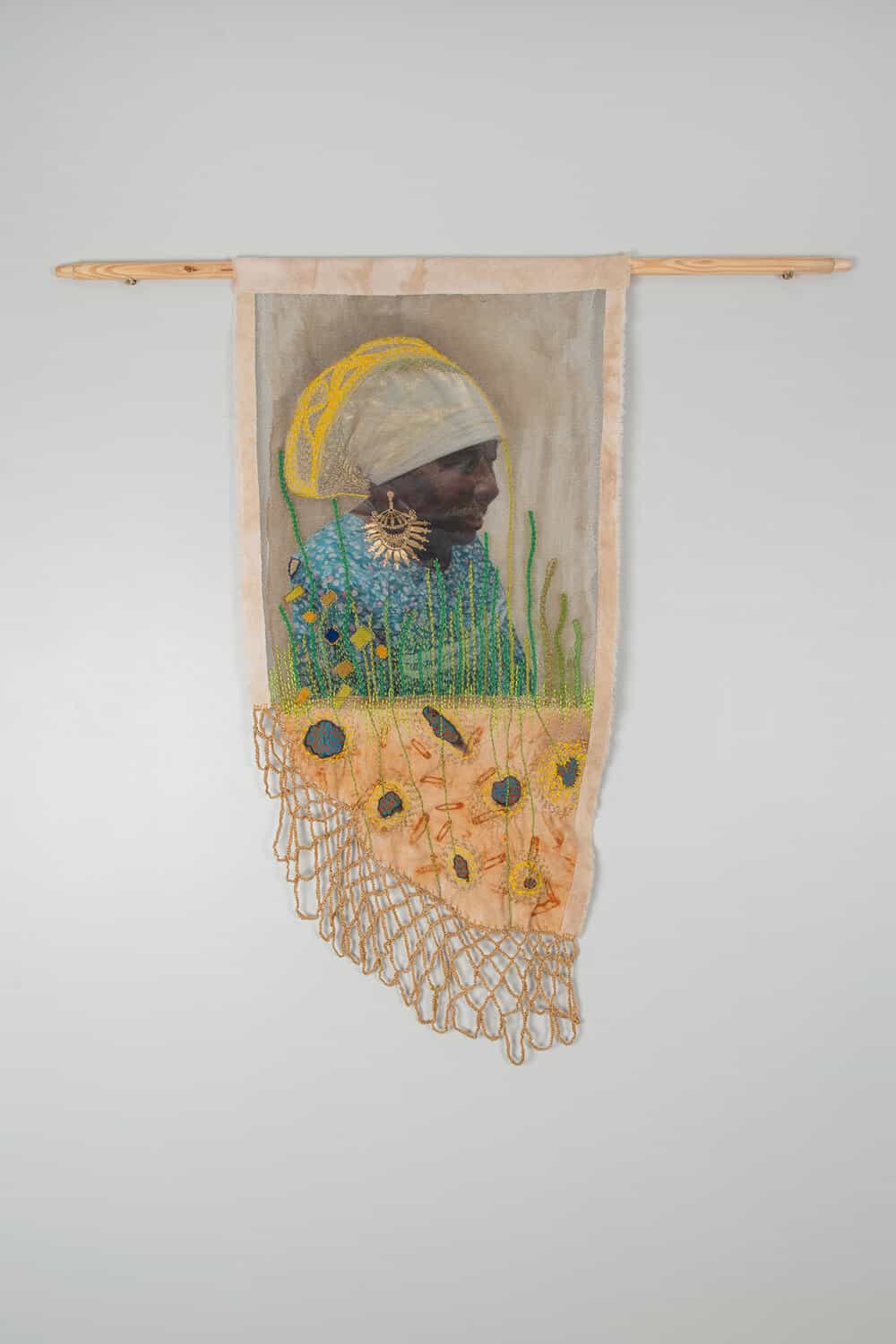
Tuli Mekondjo, Omawi Metu/Meekulu Njokonona, 2021. Image transfer on Tarlatan cloth, embroidery threads, crocheting, rusted cotton, Cloth, gold marker, gold paint, 93 x 44cm. Represented by Guns & Rain, Johannesburg.
HH: We’ve steadily grown the number of artists we work with over the last three years, but as a small two-person team, we are also conscious that the more artists we work with, the less time we have to give each of them. We are quite selective and tend to focus on artists with a robust conceptual engagement in their creative process. These artists are also all extremely technically skilled and have a real love for their chosen mediums.
Originally you had a gallery space but now operate online. Can you tell us more about this transition?
GF: In 2017, we were able to find a space in Windhoek that we converted from an old hall into a gallery. We operated from this space for a year before we launched our website. We had always known that we wanted to create an online presence and, through doing that, build up information about Namibian art and artists for a broader audience. At the same time, both of us had the opportunity to study for our Masters in the UK. We decided to move StArt online and run it from the UK while we were studying. This transition was, of course, a different way of working and made for a challenging year. On the other hand, by moving completely online, we focused on that virtual space and thought beyond brick and mortar confines. Seeing as that was pre-Covid, in hindsight, we were ahead of the curve.
We had always known that we wanted to create an online presence and through doing that, build up information about Namibian art and artists for a broader audience
How did the global pandemic play into your digital strategy (given that visiting physical art fairs was not an option), and how has the business been for you during this time?
HH: It is essential to growing the Namibian art scene locally; however, we also pay close attention to the broader art world and put a lot of work into making sure our artists are visible to a global audience. Creating space for ourselves and our artists online is a massive part of this. We had intended to participate in our first international art fair in Johannesburg in 2020. When the Turbine Art Fair went online, we realised that it created an excellent opportunity to connect with new collectors without as considerable a financial risk as fairs usually pose. We also took part in Latitudes Online and the African Art Galleries Association Art Fair on Artsy. I would say that business was pretty well last year. As a relatively young gallery, we know that we need to grow steadily in the first few years, and, despite the pandemic, we are on track with our goals.
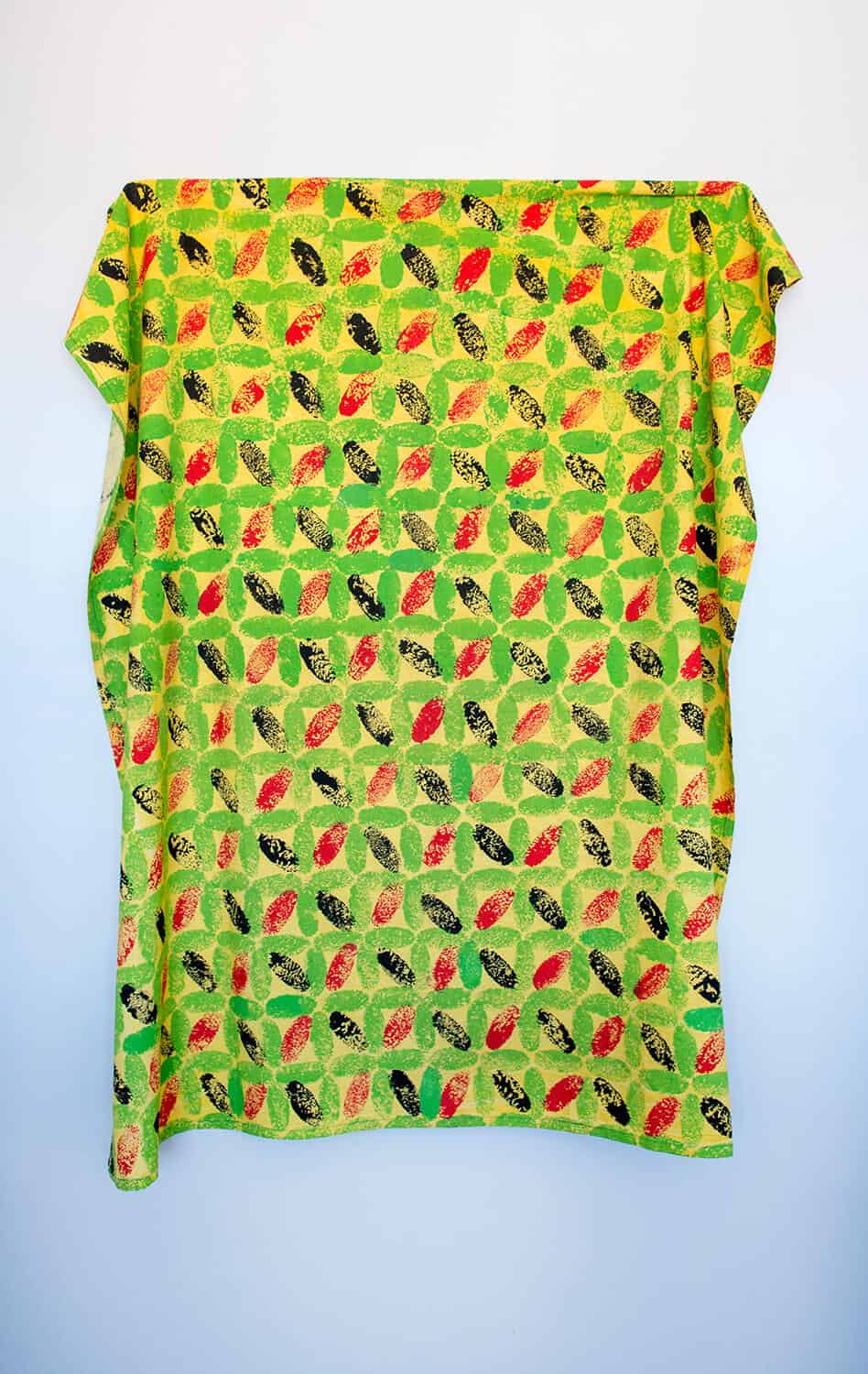
Elizabeth Shinana, Footstep, 2017. Fabric paint on a hand-dyed cotton blend, 130.5 x 150cm.
Given that things seem unlikely to change in the near future, how do you intend to adapt and operate during this period?
GF: As we’ve mentioned, we were in quite a good position when the pandemic struck. However, we had planned various physical exhibitions last year and had to switch things up quickly due to lockdown restrictions. We’re taking lessons learned from last year into our planning for this year and keeping our focus on potential collaborations, and finding new ways to show work both online and offline. We did have a couple of pop-up events in Windhoek in 2020 and intended to keep doing so as safely as possible this year. An example of a great collaboration we did last year was combining a physical exhibition of paintings by Nicky Marais installed at Guns & Rain in Johannesburg with an online viewing via Zoom for the opening, which was simultaneously projected in Windhoek at a socially distanced gathering outside. We have an online opening coming up on the 11th of February called ‘Finding Memories: additions to an everyday archive of independence’ and are looking forward to holding a physical solo exhibition of new artworks by Fillipus Sheehama in May. There is terrific flexibility to this way of working, and while it is often hard to find and prepare alternative venues and online spaces, for the moment, the pros far outweigh the cons.
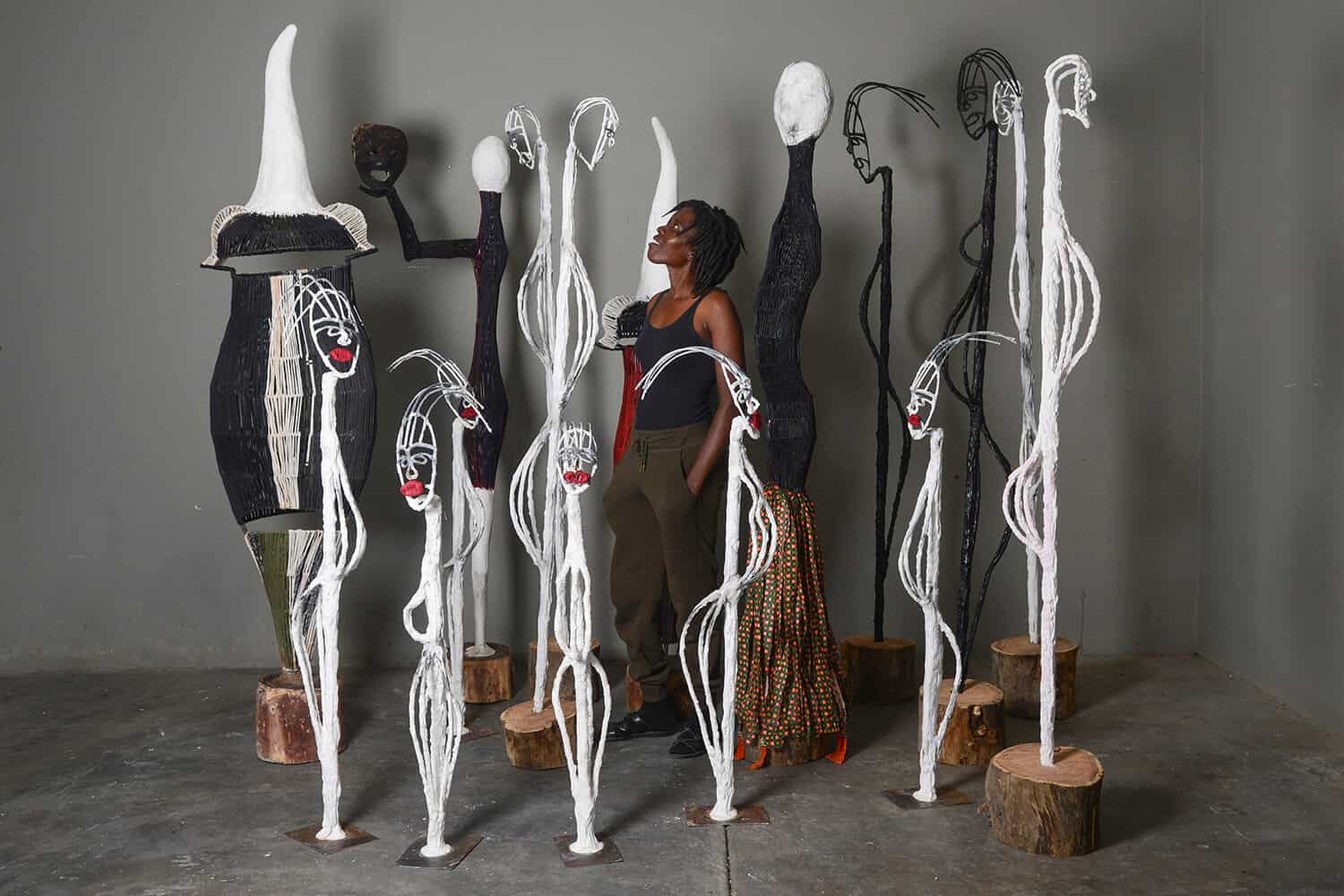
Elisia Nghidishange with some of her sculptures from her solo ‘Insight of Intrusive Women’, 2020.
Namibia, too, has a fraught historical past, and on your website, you created the platform ‘An Everyday Archive of Independence’. Can you tell us why you started this focus?
HH: ‘An Everyday Archive of Independence’ is a project that grew out of an exhibition we held in March last year. 2020 marked 30 years of Namibian Independence from South Africa. We decided to show a series of photographs by Tony Figueira, who, along with other photographers like John Liebenberg, documented the pre-independence struggle. While Figueira’s photographs are quite a remarkable record of that time period, we were acutely aware that they presented only one person’s position mediated by his decisions and privileges as a white male journalist under apartheid. We discussed these concerns with Ndapwa Alweendo, who has written about the relationship between Namibia and South Africa. During these conversations, we came up with the idea of creating an archive-like space online for a multitude of stories and images from the time of independence. For most of the artists we work with, Namibia’s colonial history and painful past with apartheid continue to affect their lives and the work they make today. Creating this space and asking for contributions to it feels like a respectful way to acknowledge this. We have framed this project as an archive to grow slowly over time and have no definite endpoint. So much of our work in exhibitions are temporary. While that is a useful and necessary way of working, the long process of building an ever-evolving archive is appealing right now in the somewhat unstable and uncertain times in which we are living.
You recently joined the African Art Galleries Association (Formerly known as the Emerging African Art Galleries Association). Why was this an essential association for you to make, and how do you see it making a meaningful difference for contemporary art from Namibia?
GF: We’re delighted to have joined AAGA. It’s excellent because, through associations like this, we get to meet colleagues from all over the continent and share tips as well as any challenges we face. Each of us has a different set of circumstances that we work in, but it can help see what kinds of similarities we share and to engage in different perspectives. Coming from a small art world, it does wonder to be part of a broader community. It opens up space for collaboration and for broadening the horizons for contemporary art from Namibia. As we grow these relationships, we’re hoping that we will create spaces and opportunities for artist exchanges, exhibitions, and collaborations across different countries. If this network grows and becomes quite robust, it could become a continent-wide structure of mutual support that will increase visibility and exchange.
The context of apartheid and the German colonial period that preceded it dominates our pre-90s art history.
Ismael Shivute, Intercession, 2020. Soapstone, 60 x 33 x 22cm.
Your focus is on contemporary art, but we can’t negate the influence of our modern masters on contemporary artistic practice. Who are some of the important figures and why?
HH: The context of apartheid and the German colonial period that preceded it dominates our pre-90s art history. From these two colonial eras, white painters like Fritz Krampe, Adolf Jensche, Erich Meyer, Johannes Blatt etc., have the best-preserved legacies. However, almost without exception, these artists claimed either German or South African nationalities and spent large portions, if not most, of their lives in those two countries. The work of black Namibian artists went mostly unacknowledged and undocumented for the majority of this time frame. While the Arts Association Heritage Trust collections and the National Art Gallery of Namibia do hold some of this critical work, there is a vast need for dedicated scholarship in this area. Otherwise, there may be a great deal of work that could be lost forever.
Given this context, it is hard to create strict boundaries around what constitutes modern/contemporary art. In Namibia, many of our ‘old masters’ are not that old. So I’m going to do a little generation mashing here to make it as simple as possible. Artists like Trudi Dicks, Samuel Mbingilo, Andrew van Wyk, John Muafangejo, and Joseph Madisia make up the master printmaking landscape. Artists like Francois de Necker, Susan Mitchinson, Paul Kiddo and Christine Marais have contributed by creating distinct visual languages through their paintings. Margaret Courtney-Clark, Amy Schoeman, Tony Figueira and Helga Köhl are our most prominent photographers, and Dörte Berne and Alfeus Mvula are two of the few foremost sculptors. The latter, I think, is essential to mention. Younger artists who loom large in the scene have worked as educators, and I would say whose work has come to define the first three decades of post-independence Namibian art Ndasuunje (Papa) Shikongeni, Barbara Böhlke, Eric Schnack, Fillipus Sheehama and Nicky Marais.

Tony Figueira, Celebration and Concern, 1990. Edition of 5, 42 x 59cm.
What is the state of your national museum and collections and what are the biggest challenges facing these kinds of institutions in Namibia?
GF: The National Art Gallery of Namibia’s collection is an incredible resource and document of contemporary Namibian art, mostly since Independence. It is extensive and highly relevant. It is the only national institution that collects regularly and so is incredibly important for our art scene and for preserving our history. Unfortunately, it does face various challenges like restricted funding and lack of infrastructure and training. For example, the collection has no permanent display and is mostly in storage. There are also almost no publications about the collection and very little written about the works that it holds. In short, the National Art Gallery produces very little scholarship historicising or thinking about art. Despite these challenges, the National Art Gallery continues to host a full programme of regular exhibitions.
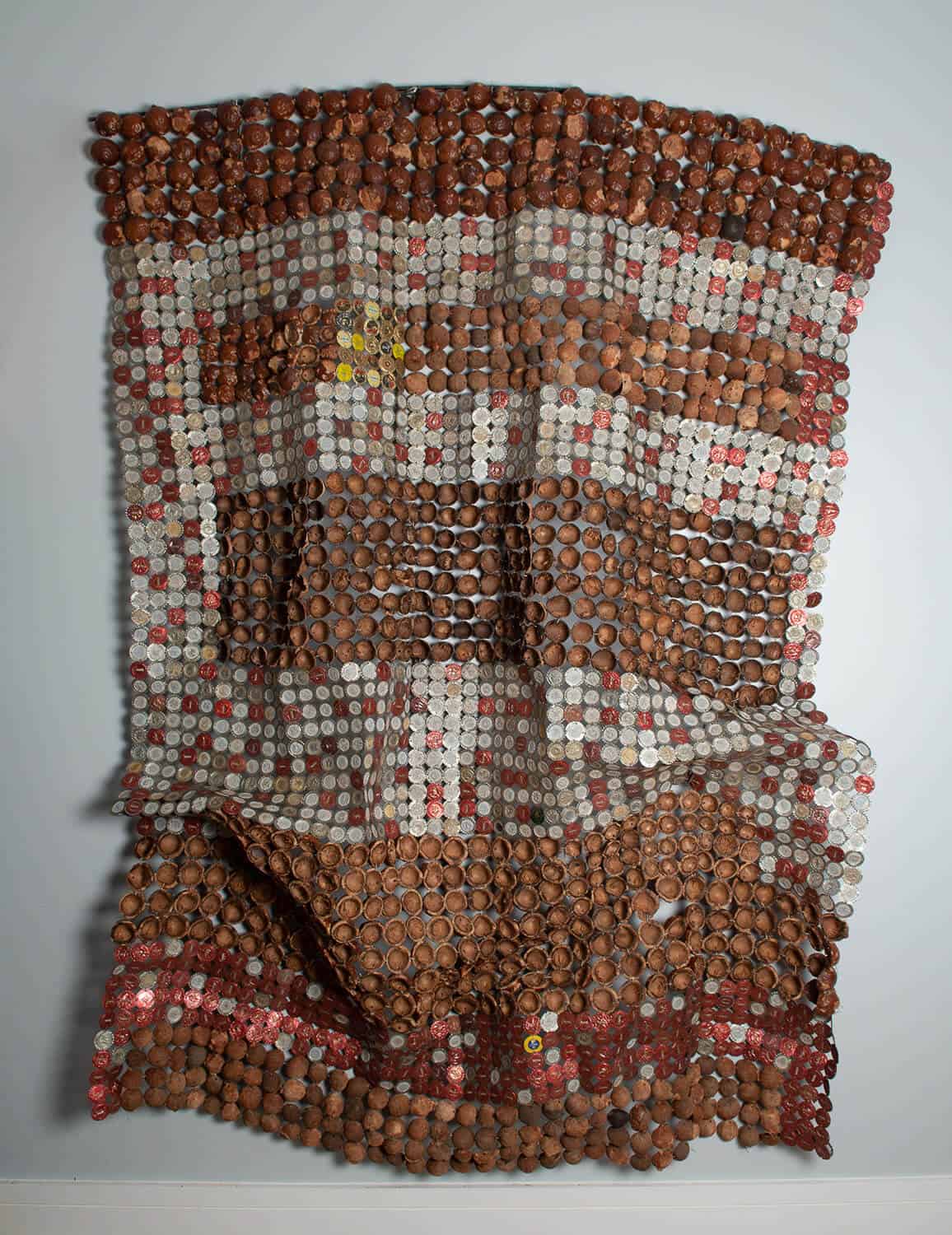
Fillipus Sheehama, Collapsing Identity, 2020. Makalani nut piths, animal bone and wire, 211 x 117 x 3cm.
What are some of StArt Art Gallery’s goals, and how do you hope to see the Namibian art scene/industry maturing in the coming years?
HH: Our biggest hope for the Namibian art scene is that it can grow to accommodate and support independent curatorial practice. Nashilongweshipwe Mushaandja has worked on the projects Operation Odalate Naiteke and the Owela Festival, Frieda Lühl on The Project Room and Hildegard Titus with Efano Efano, are curators who have run projects over the last five or so years. These projects have created space for artists and audiences in a way that didn’t exist while we were growing up. This kind of dedicated care for art and artists needs to exist within and without institutions. Lacking the financial stability provided by a more robust economic environment, projects like StArt and those run by these curators rely heavily on collaboration and mutual goodwill.
In terms of StArt Art Gallery’s goals, we are determined to make space for more writing about contemporary art, which is broadly lacking. In the medium to long term, we would like to see Namibian art included in discussions about contemporary and historical art on the continent and beyond. Of course, as a gallery, we are also very invested in building up a knowledgeable and robust collector base. We committed to getting younger Namibians interested in contemporary visual culture and art. Finally, we want to create a safe and reliable environment for artists in which to work. While these goals might sound rather broad and vague, they drive everything we do.
